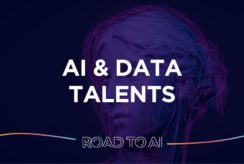In this complex period when more businesses and public organizations are on the lookout for any gain than ever before, good practices aim for more results with fewer resources. Different technological approaches allow to meet this demand for continuous improvement in performance. But faced with this uncertain context, where everyone lacks visibility, where agility is the norm, where remote work has become widespread, what are the “right” technological choices to be made to improve operational HR efficiency?
The main levers of operational HR efficiency
While there are many areas for improvement, some, directly related to the “HR function”, should be given priority. Firstly, the productivity of administrative HR teams, as well as those managing human capital and HR development. Next comes the productivity of managers as key players in HR processes, followed by lower costs for the HR function. Not to mention everything that refers to regulatory compliance and aims to avoid the penalties and risks involved.
There are, however, other performance levers, less tangible but which often turn out to be more significant, having a direct impact on the overall efficiency of the company. Customer Satisfaction, firstly, because it makes it possible to meet expectations that have become more demanding (for example, by redeploying internal teams with the appropriate skills more quickly, in view of an order book). But also, the satisfaction of employees and the continuous improvement of their commitment, too often set aside, which is essential to reduce the rates of resignation and absenteeism, and thus to control recruitment costs.
Play on different technological axes
Very conventionally, the digitization and harmonization of HR management and document management processes (by providing new services to users, for example via an employee / manager / HR portal, accessible on tablet or smartphone, etc.).
According to the Markess by exægis study published in 2020, 78% of HR decision-makers interviewed said, “The simplification of the professional daily life of employees (and managers) must be done more and more by setting up new working environments, integrating more digital dimensions ”.
In this logic of digitization, companies can accelerate their HR operational efficiency by the rapid and targeted implementation of solutions strongly in line with the HR function, for subjects lacking management automation. For example, for the management of interim, expense reports, or even schedules… This type of project offers a rapid return on investment.
Automation is a major focus for improving HR performance. It is increasingly becoming a necessity, and is notably provided by solutions using artificial intelligence, conversational agents (Chatbots), or Process Automation using Robots (RPA).
This automation makes it possible to support HR managers in their operational activities (for example, for administrative and contractual management, management of mobility / assignments, prevention of absenteeism, etc.) by focusing on human support. It also makes it possible to provide additional value for mass processing, and to strengthen regulatory security, in particular for payroll control.
Thus, the RPA applied to HR allows a saving of resources of 32% on average over all the HR processes of the employee’s life cycle, from hiring to departure.
The way HRMS is organized / urbanized, as well as its different components (HR data base, HR Core, innovative solutions / start-ups, etc.), is also a key axis. The digital transformation increases the challenges of urbanization of HRIS, imposing a new logic of construction of the latter
A subject that touches more and more companies, and which is at the heart of technological subjects: improving the relevance and quality of data. It provides useful and reliable data for the Businesses, at the “right price” of acquisition, updating and restitution (for example for reporting and analysis, operational, legal, and strategic).
Three levers to study to improve HR operational efficiency
In the current context of low visibility, the need for agility, and where remote work has imposed itself on all organizations, three levers seem interesting to us to study:
Data, to respond to the challenges of fine-grained management and mobility (workforce, suitability of skills to the new context, rapid redeployment of teams, etc.) imposed by the economic consequences of the health crisis.
An improved employee experience in the context of remote working relationships. Easy-to-use digital tools and services must make it possible to empower the employee (for example in the provision of digitized administrative supporting documents), in a logic of service continuity. It must generate greater engagement and loyalty on its part and relieve the HR function of data entry operations.
Innovative training information systems and digital learning platforms (community learning platform, solutions to help people learn and anchor new practices, augmented reality for immersive training, etc.) to allow an acceleration of the rise in skills of employees and agents, by implementing new practices of distant learning.








